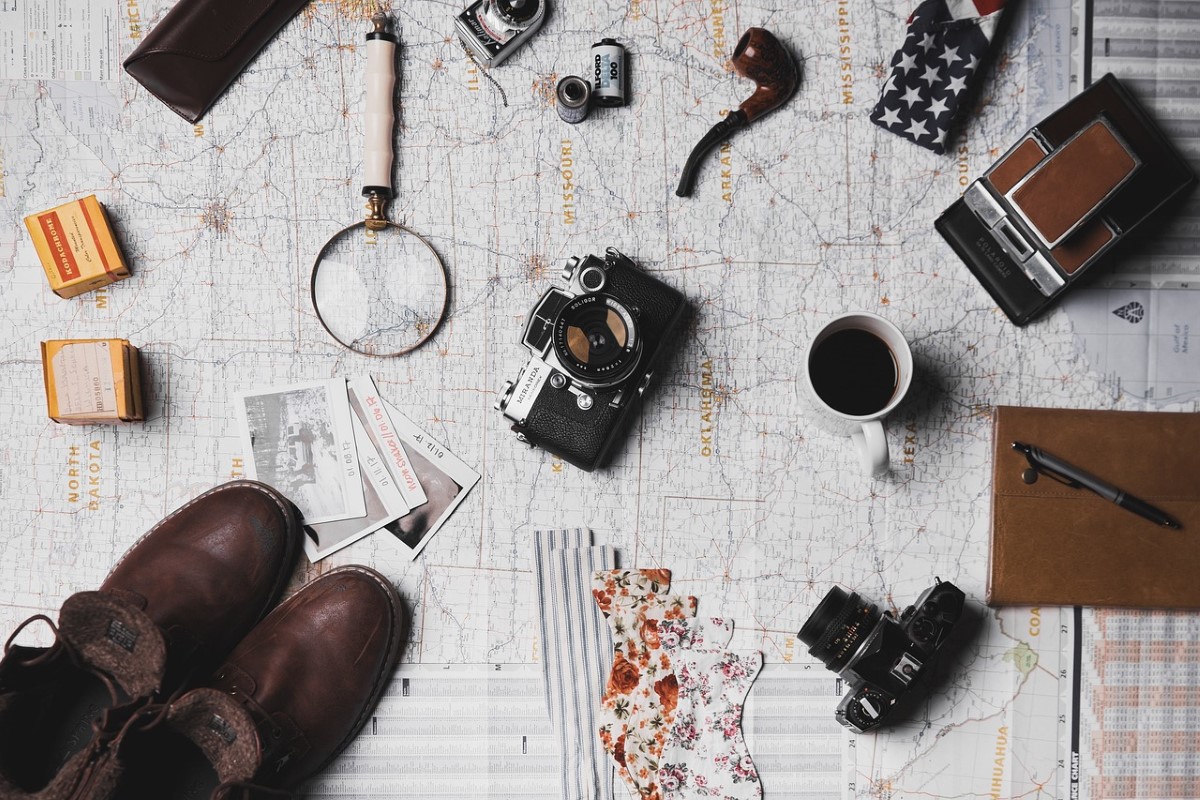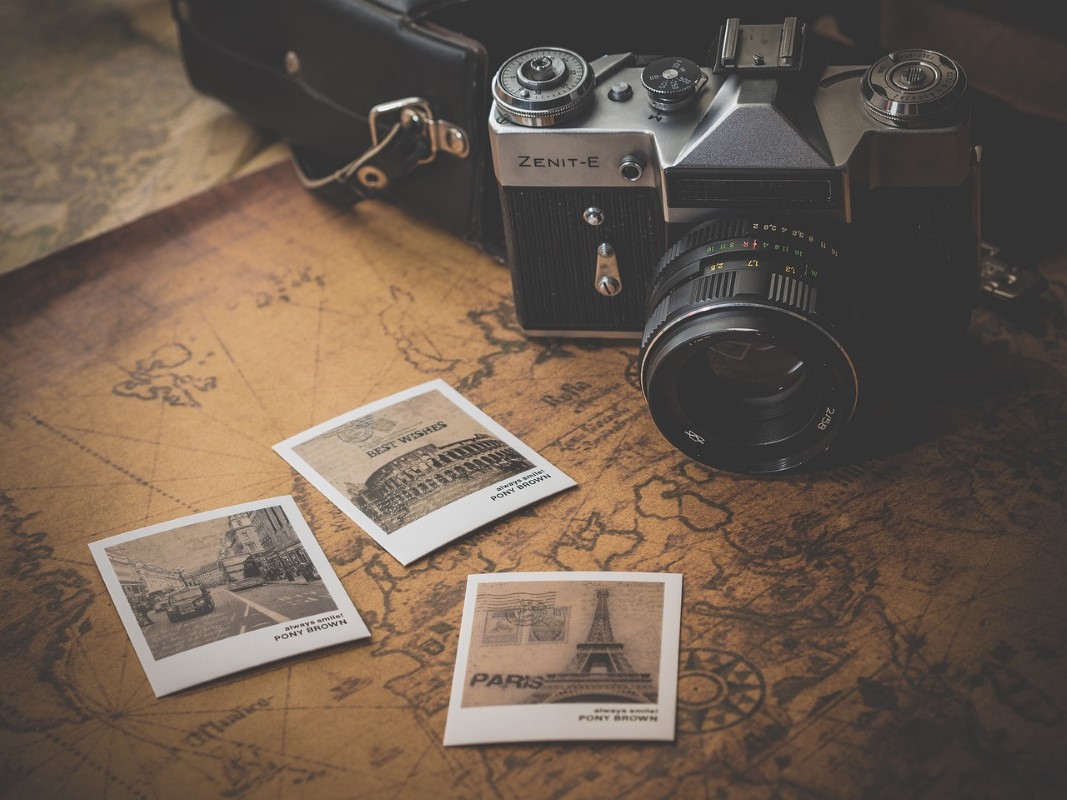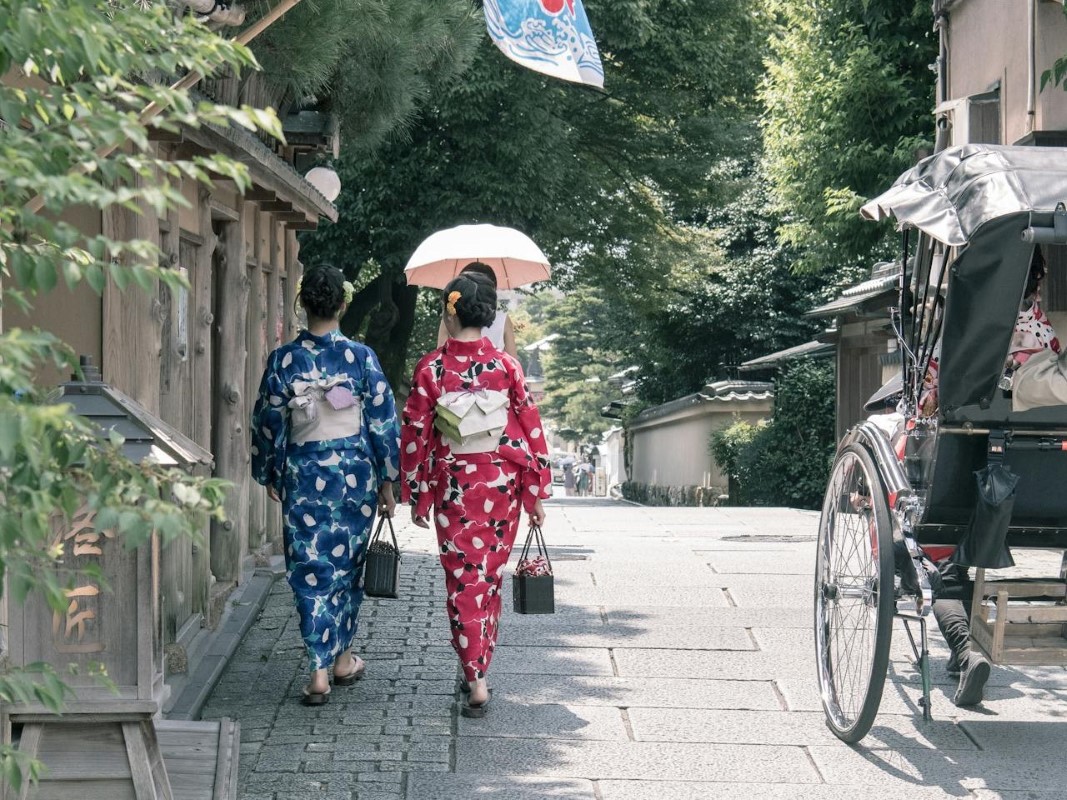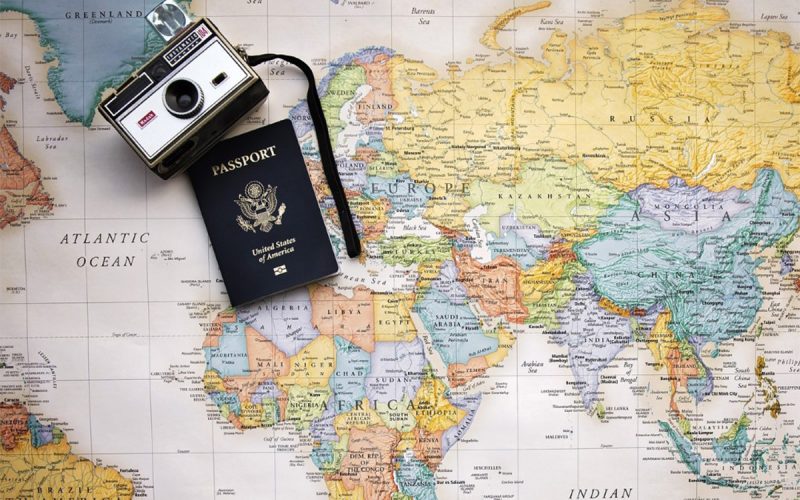Note: It took 4 months to complete research with inputs from 83 famous travelers worldwide, and then crux has published in shape of this article.
Travel has evolved dramatically in recent years, with new technologies, changing regulations, and shifting traveler preferences creating both opportunities and challenges. As we navigate the travel landscape of 2025, having the right travel hacks at your fingertips can make all the difference between a stressful journey and a seamless adventure. From long-haul flights and family vacations to solo expeditions and romantic getaways, this comprehensive guide covers essential strategies to enhance every aspect of your travel experience.
Essential Packing Travel Hacks That Professional Travelers Swear By The Art of Carry-On Only Travel
Mastering the art of traveling with just a carry-on bag has become increasingly valuable as airlines continue to raise checked baggage fees. Professional packers recommend the 5-4-3-2-1 rule: five pairs of underwear, four tops, three bottoms, two pairs of shoes, and one versatile jacket. This combination creates enough outfit variations for a week while fitting perfectly into standard carry-on dimensions.
When selecting clothing, prioritize pieces that can be worn multiple ways. A simple black dress can transition from daytime sightseeing with sneakers to evening dining when paired with accessories. Quick-dry fabrics like merino wool naturally resist odors and can be worn multiple times between washes, reducing the number of items needed.
Space-Saving Compression Techniques
Modern compression technology has revolutionized packing efficiency for 2025 travelers. Vacuum-sealed bags can reduce clothing volume by up to 80%, while packing cubes organize your belongings into manageable sections while maximizing every inch of space.
Roll softer garments like t-shirts and underwear instead of folding them to prevent wrinkles and save space. For bulkier items like sweaters or jackets, the military rolling technique-folding sleeves in and rolling from bottom to top-creates compact, easy-to-pack bundles that maintain their shape while maximizing luggage capacity.
Read More in our Informative Section for top Informational Articles
Toiletry Management
Toiletries often consume disproportionate space and create leak risks. Solid alternatives-shampoo bars, conditioner bars, solid perfumes, and toothpaste tablets-eliminate liquids entirely, bypassing airport security restrictions while saving significant space.
For liquid products you can’t replace with solids, invest in flat, leakproof silicone containers rather than traditional bulky bottles. Pre-measure cosmetics like foundation or sunscreen into contact lens cases for short trips. Place all liquids inside sealed reusable bags even if they’re already in your toiletry container-this double protection prevents disaster if something leaks at high altitude.
Tech Packing Organization
Electronic devices and their accessories often create tangled messes in luggage. Use cord organizers with individual elastic loops to keep chargers, earbuds, and adapters neatly separated. Label each cable with small washi tape flags to quickly identify which device each serves.

A lightweight electronics organizing cube with mesh pockets protects and organizes all your tech in one place. This becomes especially valuable when passing through security, as you can remove a single container rather than digging through your entire bag for scattered devices.
Long-Haul Flight Survival: Comfort Hacks for Extended Air Travel
Clothing Choices – Another Important Travel Hack
What you wear significantly impacts your comfort during flights exceeding five hours. Opt for natural, breathable fabrics with slight stretch that won’t restrict circulation during prolonged sitting. Layering is essential-cabin temperatures fluctuate dramatically, and having removable layers allows precise temperature control.
Compression socks have evolved from medical necessities to travel essentials, reducing swelling and lowering the risk of deep vein thrombosis. Complete your flight outfit with slip-on shoes for easy removal during security and comfort during the flight, while avoiding flip-flops or sandals that leave feet exposed to cold air and potentially unsanitary surfaces.
Seat Selection Science
Not all airplane seats offer equal comfort. Exit row seats typically provide extra legroom without premium pricing, though they don’t recline on some aircraft. Bulkhead seats eliminate the issue of reclining passengers in front of you but often have fixed armrests that slightly reduce width.
Window seats provide a surface to lean against for sleeping and ensure no one climbs over you during rest. Aisle seats offer freedom of movement but expose you to disturbances from passing carts and passengers. When traveling with a companion, book the window and aisle seats in a three-seat row-middle seats are chosen last, giving you potential extra space if the flight isn’t full.
Hydration and Nutrition Strategy – A must follow hack
Aircraft cabins maintain humidity levels of 10-20%, significantly drier than most deserts. Combat dehydration by drinking approximately eight ounces of water hourly during flight. Bring an empty reusable bottle through security and fill it before boarding to maintain hydration without relying on infrequent beverage service.

Prepare your body by starting hydration efforts 24 hours before flying and avoiding alcohol and caffeine, which amplify dehydration effects. Pack nutrient-dense snacks like nuts, dried fruits, or protein bars to maintain energy levels without relying on often limited or unhealthy airline food options.
Creating Sleep Conditions
Quality sleep transforms the long-haul flying experience. Create a sleep-inducing environment with an ergonomic neck pillow (memory foam or inflatable models offer superior support), an eye mask that contours to your face without pressure, and high-quality earplugs or noise-canceling headphones.
Inform flight attendants of your sleep plans so they won’t wake you for meals you plan to skip. Some airlines offer “do not disturb” stickers for this purpose. Set your watch to your destination’s time zone immediately after boarding and begin adjusting your sleep schedule accordingly to minimize jet lag upon arrival.
In-Flight Wellness Routine
Combat the physical challenges of prolonged sitting with a simple wellness routine. Set hourly reminders to perform basic stretches in your seat. Every two hours, walk briefly through the cabin when possible to stimulate circulation and prevent stiffness.
Pack a compact wellness kit including eye drops for cabin-induced dryness, moisturizer, lip balm, facial mist, and essential oils like lavender or peppermint to refresh your senses. Simple seated exercises like ankle circles, shoulder rolls, and neck stretches prevent stiffness and reduce the risk of travel-related health issues.

Solo Travel: Safety, Connection, and Maximizing Independence
Safety Without Paranoia – Travel Hacks
Solo travel offers unparalleled freedom but requires increased awareness. Register with your country’s embassy or consular services at each destination and share your detailed itinerary with trusted contacts. Establish regular check-in protocols using messaging apps with location-sharing capabilities.
When sharing travel experiences on social media, consider using delayed posting features to share moments after you’ve moved on from that location. This prevents broadcasting real-time whereabouts while still allowing you to document your journey. Mark your accommodation location on offline maps for easy navigation if your phone loses connection.
Connecting With Fellow Travelers
Solo doesn’t have to mean lonely. Communal accommodation options like hostels or co-living spaces facilitate natural interactions with like-minded travelers. City walking tours, cooking classes, and group excursions provide structured environments to meet others while experiencing local culture.
Digital platforms connecting solo travelers have grown increasingly sophisticated, offering verified user reviews and video chat features to establish comfort before meeting in person. These tools help find dinner companions, day-trip partners, or photography buddies without compromising safety.
Financial Management On The Road
Financial independence while traveling requires strategic planning. Carry at least two different payment methods stored separately. Notify your financial institutions of your travel dates and destinations to prevent fraud alerts from freezing your accounts at inopportune moments.

Keep an emergency fund of approximately 100 USD/EUR in local currency separate from your primary cash supply. This reserve proves invaluable during unexpected situations like medical emergencies or when digital payment methods fail. Money belts and hidden pouches have evolved with anti-theft technology, providing secure storage for essential valuables.
Adding another travel hack to this Travelling Tips Guide, when booking flights, search for Airline vouchers in your Email, if you travel often otherwise you can search the internet. You may find a voucher or coupon, result in savings hundreds of dollars. I generally purchase vouchers from BHflights.com
Solo Photography Solutions
Capturing memories while traveling alone presents unique challenges. Beyond the traditional selfie stick, portable tripods with Bluetooth shutter controls have become more sophisticated and compact. Some models incorporate AI technology that tracks movement to keep you in frame during videos or capture candid moments.

Don’t hesitate to ask locals or fellow travelers to take your photo-this simple request often leads to memorable interactions and more authentic photographs than self-captured images. Practice using your smart watch as a remote shutter control for perfectly framed hands-free photos that don’t scream “tourist”.
Dining Solo With Confidence
Solo dining intimidates many travelers, but strategic approaches transform it into an enjoyable experience. Lunch reservations typically offer easier access to popular restaurants than dinner slots. Counter seating provides natural conversation opportunities with staff and fellow diners while eliminating the awkwardness of empty chairs.
Bring a journal, book, or language-learning app if you prefer occupation during meals. Alternatively, practice mindful eating-fully engaging with the flavors, aromas, and presentation without distraction-for a meditative experience that enhances culinary appreciation.
Family Travel: Keeping Kids Entertained While Preserving Parental Sanity

Age-Appropriate Travel Activities
Successful family journeys require entertainment strategies tailored to children’s developmental stages. For toddlers and preschoolers, tactile activities like modeling clay, sticker books, and magnetic puzzles provide quiet entertainment during transit. Small containers of homemade playdough (with essential oils for pleasant aroma) occupy small hands for surprising periods.
Elementary-aged children engage well with travel journals prompting them to draw and describe daily experiences. Create destination-specific scavenger hunts or collection challenges like photographing animals or identifying architectural features to transform sightseeing into exciting games.
Teenagers respond best to increased responsibility in trip planning. Allow them to research and select certain activities or navigate portions of your journey, transforming them from reluctant participants to engaged travel partners with ownership in the experience.
Technology Balance
While screens offer convenient distraction during difficult travel moments, balanced technology use enhances rather than replaces real experiences. Download interactive educational apps specific to your destination that transform learning about local history, culture, or wildlife into engaging games.
Audiobooks and podcasts provide screen-free entertainment during long transit periods. Family-friendly audio dramas, history narratives tailored to younger listeners, or age-appropriate fiction related to your destination can captivate children without visual stimulation, making them perfect activities for tired eyes during flights or car rides.
Travel Rewards Systems
Incentive structures motivate positive behavior during challenging travel moments. Create a simple point system rewarding patience during delays, trying new foods, or demonstrating cultural respect. Points can be redeemed for small privileges like choosing the next activity or a special treat.
Some families implement a “travel jar” where everyone contributes a small amount to a collective fund before departure. These pooled resources can then be used for an unexpected group splurge when the perfect opportunity arises during your journey.
Packing Hacks For Family Trips

Family packing requires particular efficiency. Assign each family member a different colored packing cube system for easy identification. For younger children, pack complete outfits together in large ziplock bags labeled with days or activities to eliminate daily clothing decisions.
Create dedicated activity bags for different scenarios-one for restaurants, another for flights, and a third for rainy days at your destination. Rotate access to these special bags to maintain novelty throughout your trip, revealing new options when boredom threatens to derail your carefully planned experiences.
Destination Spotlight: Japan in 2025
Navigating New Entry Systems
Japan has revolutionized its entry process with two major systems for 2025. The Japan Electronic System for Travel Authorization (JESTA) now requires pre-approval before arrival, similar to the U.S. ESTA system. Complete this application at least 72 hours before departure to avoid entry complications.
The Pre-Clearance program allows travelers from select countries to complete immigration procedures before boarding their flight to Japan. This advancement significantly reduces arrival processing time but requires earlier airport arrival for departure. Verify your eligibility and required documentation through Japan’s official immigration website before planning your trip.
Transportation Evolution
Japan’s renowned transportation system continues evolving with important changes for travelers in 2025. The Japan Rail Pass reservation system now mandates advance seat bookings for certain high-demand routes, particularly during cherry blossom season and summer holidays. The mobile application for seat selection opens 30 days before travel, with popular routes often filling within hours of availability.

Local subway systems in major cities have transitioned to fully automated operation, with integrated real-time translation services through the official transportation apps. Download these applications before arrival and link your payment method for seamless navigation throughout your visit.
Tax Reforms and Refund Procedures
Japan’s consumption tax refund system has undergone significant restructuring in 2025. The previous in-store refund option has been eliminated in favor of a centralized digital system. Register your passport through the official tax refund application to link all eligible purchases automatically. Refunds now process directly to your registered payment method within 14 days of departure verification.
The minimum purchase threshold for tax exemption has increased to 15,000 yen per store, encouraging larger consolidated purchases rather than small transactions across multiple locations. Save time by planning your shopping strategy accordingly to meet these thresholds efficiently.
Expo 2025 Impact
Osaka hosts the World Exposition from April 13 to October 13, 2025, dramatically affecting travel throughout Japan during this period. Accommodation prices nationwide show average increases of 35-50% during the Expo months, with Osaka and Kyoto experiencing the most significant inflation.
Transportation systems throughout central Japan operate at near capacity during this period, making advance reservations essential even for routes that typically don’t require them. Consider visiting northern Hokkaido or southern Kyushu regions to experience Japan with fewer crowds if your travel dates must fall during Expo season.
Sustainable Tourism Initiatives
Japan has implemented several environmental sustainability measures affecting tourists in 2025. Major natural attractions including Mount Fuji and portions of popular national parks now operate under visitor quota systems requiring advance reservations. These limitations preserve the natural environment while ensuring a quality experience for those who secure permits.
The hiking fee for Mount Fuji has increased to approximately 31 Euro, with proceeds funding conservation efforts and improved facilities. Additionally, many popular destinations now offer discounts for travelers who present reusable water bottles, shopping bags, and utensils, incentivizing sustainable practices throughout your journey.
Perfect Weekend Getaways: Maximizing Limited Time
Strategic Destination Selection
Weekend escapes require destinations that deliver maximum experience with minimal travel time. Prioritize locations within a 3-4 hour travel radius to ensure transportation doesn’t consume your precious hours. For flight-based weekends, direct routes departing Friday evening and returning Sunday night maximize your time at the destination.
Consider overlooked destinations within driving distance that offer unique experiences without crowds. Instead of popular beach towns, explore lakeside retreats with similar amenities but shorter lines and more authentic local interactions. Second-tier cities often feature world-class museums, distinctive culinary scenes, and cultural attractions without the overwhelming tourism of major metropolitan areas.
Efficient Itinerary Planning
Weekend trips demand strategic planning without overscheduling. Research opening hours before arrival-many museums close Mondays or have extended hours on specific evenings. Plan your activities accordingly to avoid disappointment and maximize access opportunities.
Create themed itineraries that concentrate experiences geographically. A food-focused route through a specific neighborhood minimizes transit time between activities while providing a cohesive experience. Similarly, architectural tours or historical explorations benefit from geographic clustering to reduce time spent traveling between distant sites.
Accommodation Strategy
Location becomes even more critical during brief stays. Select accommodations within walking distance of your primary interests, even if this requires a slightly higher budget. The time saved on transportation often outweighs the additional cost, particularly when every hour counts.
Consider early check-in and late checkout options when booking. Many hotels offer these services for minimal fees or as complimentary benefits for loyalty program members. Securing these extensions effectively adds half a day to your usable time at the destination without requiring an additional night’s stay.
Local Experience Enhancement
Weekend trips offer perfect opportunities to engage with local culture more deeply than typical tourist experiences. Research upcoming community events, farmers markets, or local festivals occurring during your visit for authentic experiences not found in guidebooks.
Connect with local guides for private tours tailored to your specific interests rather than generic group experiences. While potentially more expensive, these personalized experiences often access areas, people, and stories inaccessible to larger tours, creating more meaningful connections with your destination in limited time.
Weather Contingency Planning
Short trips have minimal flexibility for weather disruptions, making contingency planning essential. Research indoor alternatives for each outdoor activity on your itinerary. Museum visits can replace hiking plans; cooking classes can substitute for garden tours; wine tastings can stand in for outdoor festivals.
Monitor weather forecasts in the days leading up to your departure and adjust reservations accordingly. Many attractions offer flexible cancellation policies, allowing you to pivot your plans as conditions change without financial penalties if you remain aware of cancellation deadlines.
Travel Fashion: Practical Style Hacks for Every Destination
Versatile Wardrobe Foundations
Building an effective travel wardrobe begins with selecting versatile foundation pieces that perform across multiple situations. Wrinkle-resistant fabrics with stretch, moisture-wicking properties, and quick-drying capabilities form the core of an efficient travel wardrobe for 2025.
Convertible clothing has evolved beyond typical zip-off pants to include elegantly designed pieces that transform for different settings. Reversible jackets provide two distinct looks; adjustable-length dresses transition from day to evening; and multi-way wraps function as scarves, shawls, beach cover-ups, or even improvised bags as needed.
Destination-Specific Packing
Research cultural expectations and typical weather patterns before selecting your travel wardrobe. Religious sites often require modest clothing with covered shoulders and knees, while certain upscale establishments maintain strict dress codes even in warm climates.
For beach destinations, quick-drying swimwear with UPF protection eliminates lengthy drying times between swims. In urban environments, comfortable walking shoes with sleek profiles provide necessary support without the obvious “tourist” appearance of bulky athletic styles-essential for both comfort and avoiding unwanted attention in certain destinations.
Packing Light Without Sacrificing Style
Strategic accessorizing transforms basic outfits into diverse looks without adding significant weight. Scarves in lightweight silk or cotton serve multiple functions-neck coverings, head protection, shoulder wraps for modest settings, or emergency bags in a pinch. Compact jewelry dramatically changes an outfit’s appearance while requiring minimal luggage space.
For colder destinations, adopt the “wear your bulkiest items” strategy during transit. Wearing your heaviest boots, coat, and sweater while traveling rather than packing them creates substantial luggage space while providing layering options for temperature changes during your journey.
Summer Vacation Wardrobe Essentials
Beach and warm-weather destinations benefit from lightweight fabrics that resist wrinkling even when packed in a beach bag for hours. Cotton-linen blends offer breathability with improved wrinkle resistance compared to pure linen, making them ideal for tropical vacations.
The core summer travel wardrobe includes two swimwear options (allowing one to dry while wearing the other), a lightweight cover-up that doubles as casual wear, quick-drying shorts or skirts, breathable tops, and a light jacket for unexpected temperature drops or aggressive air conditioning in tropical destinations.
Travel Outfit Formulas
Streamline your travel wardrobe planning with proven outfit formulas that simplify packing decisions. The 3-3-3 formula recommends three bottoms, three tops, and three shoes that all coordinate interchangeably, creating nine distinct outfits from just nine items.
For business travelers, the “column of color” approach pairs matching top and bottom in a single color, topped with contrasting jackets or accessories. This method creates a streamlined silhouette that appears polished while simplifying coordination efforts when packing for professional engagements abroad.
Couple’s Travel Hacks: Strengthening Relationships Through Shared Experiences
Communication Protocols
Even the strongest relationships face stressors during travel. Establish clear communication systems before departure to address disagreements constructively. Some couples implement a “time-out” word that signals when a discussion should pause until both parties are less stressed.
Schedule brief daily check-ins to discuss expectations for the coming day and reflect on highlights from the previous one. This practice prevents misunderstandings and ensures both partners feel heard throughout the journey, preventing small frustrations from accumulating into significant conflicts.
Balancing Different Interests
Few couples share identical travel preferences. Rather than compromising constantly, consider alternating decision-making days where one partner selects all activities, followed by the other partner’s day. This approach allows both individuals to fully enjoy their preferred experiences while participating supportively in their partner’s choices.
For activities with strong preference disparities, consider occasional separate adventures followed by an enthusiastic exchange of experiences when reuniting. This strategy often results in both partners feeling fulfilled rather than frustrated by forced participation in activities that don’t match their interests.
Budget Harmony
Financial tensions commonly arise during travel. Prevent disagreements by establishing a clear vacation budget with specific allocations for accommodations, meals, activities, and souvenirs before booking your trip.
Consider creating a dedicated “splurge fund” for unplanned opportunities that arise during travel. Having this pre-authorized discretionary spending prevents friction when unexpected experiences present themselves, allowing spontaneous decisions without budget anxiety.
Capturing Memories Together
Beyond standard couple selfies, creative documentation enhances the shared experience. Time-lapse videos of your day, voice memo reflections, or collaborative travel journals provide richer memories than photographs alone.
Consider a “one second everyday” video project throughout your trip, combining brief clips into a dynamic memento of your journey together. These creative documentation approaches often capture the authentic emotion of travel that static images miss, creating lasting reminders of your shared experiences.
Relationship Enhancement Through Travel
Use travel as an opportunity to strengthen your connection. New experiences stimulate conversation and create shared memories that continue to benefit your relationship long after returning home.
Schedule intentional device-free periods to fully engage with both the destination and each other. Many couples find that these technology breaks lead to their most meaningful travel conversations and discoveries, allowing deeper connection without digital distractions.
Beach and Lake Vacations: Specialized Water Destination Hacks
Water Safety Enhancements
Water-based vacations benefit from advanced safety preparation. Research water conditions before swimming, particularly in natural settings where currents, tides, or underwater hazards may not be immediately apparent. Local knowledge typically provides more accurate information than general travel guides.
For families, traceable wristbands that monitor proximity to water help prevent unsupervised access. These devices communicate with smartphone applications to provide immediate alerts when boundaries are crossed, adding crucial safety layers to water-adjacent accommodations.
Beach Comfort Innovations
The beach experience has evolved with practical innovations for 2025. Sand-repelling mats provide comfortable sitting surfaces while allowing sand to fall through rather than accumulate. Anchor systems prevent windblown towels and umbrellas without requiring excessive equipment.
Portable shade structures have advanced significantly, with lightweight options deploying in seconds and providing UPF 50+ protection. Some incorporate solar panels to power device charging stations, combining sun protection with practical technology needs during long beach days.
Lake Activity Optimization
Lake destinations offer diverse activities requiring specific approaches. Research water quality reports before swimming, particularly in smaller lakes where algae blooms may create health hazards during warm months. Local conservation websites typically provide this information with regular updates.
For fishing enthusiasts, connect with local bait shops upon arrival rather than packing extensive gear. These establishments offer current information about successful techniques, temporary feeding patterns, and location-specific recommendations that generic research cannot provide.
Equipment Rental Strategies
Water equipment rental decisions should consider frequency of use, transportation limitations, and quality requirements. Calculate the breakeven point between rental costs and purchase price if you’ll visit similar destinations regularly. For occasional users, rentals eliminate maintenance and transportation challenges.
Reserve specialized equipment before arrival, particularly during peak seasons. Many premium rental providers offer delivery services to your accommodation, eliminating transportation logistics and maximizing your enjoyment time once you arrive.
Environmental Protection Practices
Water ecosystems face particular vulnerability to tourism impacts. Practice responsible environmental stewardship by using reef-safe sunscreen formulations that eliminate oxybenzone and octinoxate, chemicals proven harmful to aquatic life.
Leave natural areas as you found them, removing all waste and avoiding collection of shells, rocks, or plants that play important roles in the local ecosystem. Many beach and lake destinations now offer environmental education programs providing deeper understanding of conservation challenges facing these precious resources.
The Future of Travel Hacks
As we navigate the dynamic travel landscape of 2025, the most valuable travel hack remains adaptability-the willingness to embrace unexpected challenges as opportunities for growth and discovery. While thorough preparation creates a foundation for successful journeys, maintaining flexibility allows for those serendipitous moments that often become our most treasured travel memories.
The evolution of travel technology continues creating new opportunities for enhanced experiences. From AI-powered translation tools that facilitate deeper cultural connections to sustainable travel options that reduce our environmental footprint, embracing innovation while honoring traditional travel wisdom creates the perfect balance for modern adventures.
Whether planning a weekend escape to rejuvenate your spirit, a family vacation to create lasting memories, a romantic retreat to strengthen your relationship, or a solo journey of self-discovery, implementing these travel hacks transforms your experience from ordinary to extraordinary. The world awaits your exploration-pack thoughtfully, travel mindfully, and return home transformed by the journey.





